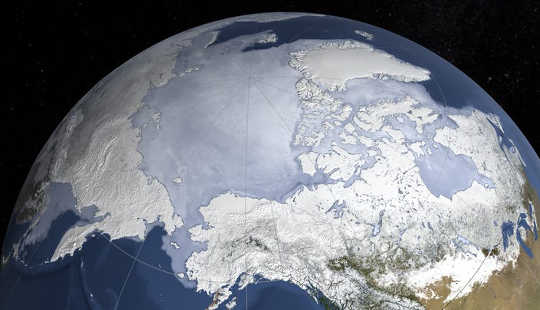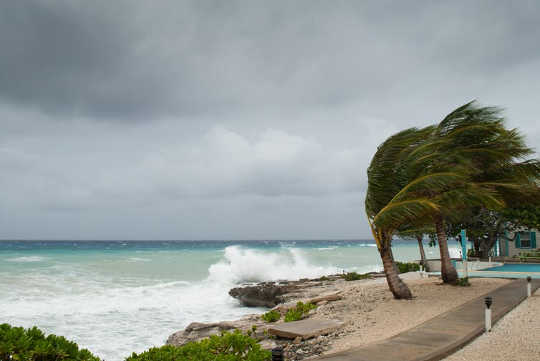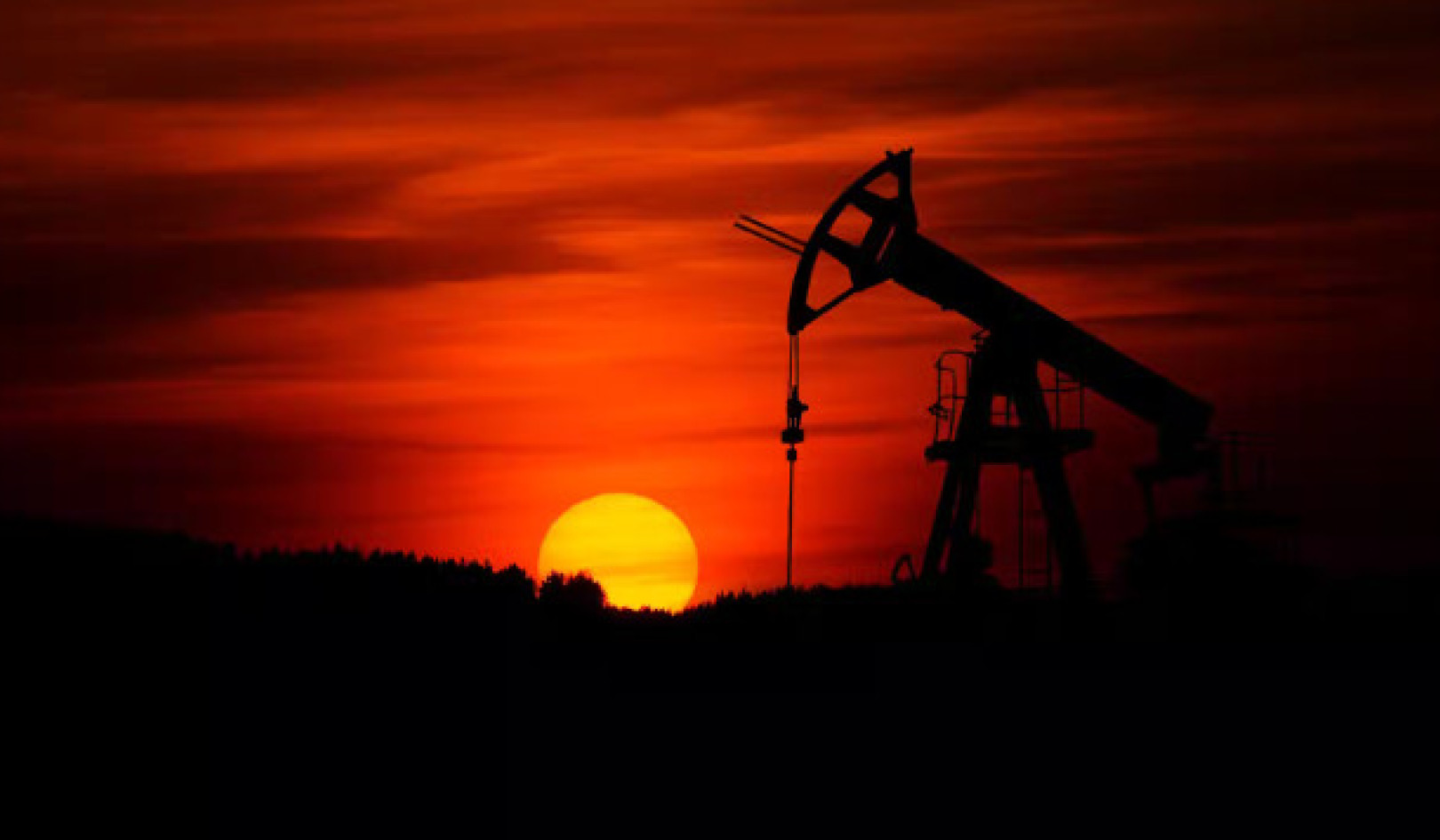
elRoce / shutterstock
Världens klimatforskare har talat: om vi vill begränsa den mänskliga inducerade globala uppvärmningen till 1.5? vi kan nog. Men det kommer att bli tufft med tanke på var vi utgår från.
Det är slutsatsen av a ny rapport by the UN’s Intergovernmental Panel on Climate Change (IPCC). The focus on 1.5? is the result of years of international negotiation. Starting in 1994, a central aim of the UN’s climate change efforts (the Framework Convention on Climate Change, or UNFCCC) was to stabilise greenhouse gas concentrations at a level that would “prevent dangerous anthropogenic interference with the climate system”. Much was written on what this meant, particularly the word “dangerous”.
Negativa effekter av klimatförändringar sker på ett kontinuum, och att definiera en punkt där klimatförändringar blir farliga är svårt och omtvistat. Å andra sidan är klimatförhandlingar svåra utan något mål att arbeta mot.
Fifteen years later, the UNFCCC’s Copenhagen Accord introduced a 2? target, and its 2015 Parisavtalet was even more specific: it “aims to strengthen the global response to the threat of climate change … by holding the increase in … temperature to well below 2? above pre-industrial levels and pursuing efforts to limit the … increase to 1.5?”.
IPCC ger vetenskapliga råd till UNFCCC, som gör policy, och IPCC själv har aldrig angett något temperaturmål. Den listar dock klimatförändringsrisker med hjälp av fem "skäl till oro". Dessa inkluderar effekter som "unika och hotade ekosystem och kulturer" (som korallrev) och "extrema väderhändelser", som var och en är klassad på en skala från "oupptäckbar" till "mycket hög". IPCC:s senaste (2014) Femte bedömningen of the scientific evidence found that at around 1.5? warming there was a transition från måttlig till hög risk för hotade ekosystem och kulturer och för extrema väderhändelser. Det finns således överensstämmelse mellan Paris- och IPCC-bedömningarna.
 Klimatförändringarna kommer att göra vissa typer av extremväder vanligare. Drew McArthur/Shutterstock
Klimatförändringarna kommer att göra vissa typer av extremväder vanligare. Drew McArthur/Shutterstock
The Paris Agreement asked the IPCC to report on the impacts of global warming of 1.5?, and this new publication is the result. Its tone is not “we must avoid 1.5? warming”, as you might think from many commentators, but more “if we want to avoid 1.5? warming, this is what must be done”. The report contrasts the impact of 1.5? and 2? warmings, giving information on what would be gained by the extra effort needed to limit warming to 1.5?.
As the IPCC’s reports are largely based on a critical assessment and synthesis of published scientific papers, many of its latest conclusions are unsurprising. There are many well recognised uncertainties in understanding climate change - for instance, even if we set a course aiming to hit 1.5? (which is mostly determined by future CO? emissions), we could end up hitting, say, 1? or 2? instead. The report provides uncertainty ranges in its estimates and confidence levels, based on expert judgement.
The new report tells us that human activity has already caused about 1? of global warming, while at the present rate of warming (0.2? per decade) we’ll hit 1.5? by about 2040. National pledges made as part of the Paris Agreement still mean we are on course for warming of about 3? by 2100, meaning four of the five “reasons for concern” would then be in the high to very-high risk category.
Achieving the 1.5? target will require anthropogenic CO? emissions to decline by 45% by 2030 (relative to 2010). By 2050, they will need to reach “net zero” - any further CO? emissions due to human activity would then have to be matched by avsiktligt avlägsnande of CO? already in the atmosphere, including by planting trees. Net zero would have to occur by around 2075 to meet a 2? target.
 Ett återplanteringsprojekt i Thailand. Somrerk Witthayanantw/Shutterstock
Ett återplanteringsprojekt i Thailand. Somrerk Witthayanantw/Shutterstock
Many illustrations are given for the difference between 1.5? and 2? worlds. At 1.5?, summertime Arctic sea ice is projected to disappear once per century, compared to once per decade at 2?; 8% of plants that have been studied would lose half their climatically-suitable area, compared to 16%; sea level rise would be 10cm less (with 10m fewer people impacted at today’s population levels); and while coral reefs might decline by a further 80% at 1.5?, they could virtually disappear at 2?.
The report identifies various routes by which emissions cuts would limit warming to 1.5?; each makes assumptions about future changes in, for example, economic strategy, population growth and the rate at which low carbon energy is adopted. The IPCC recognises the challenges are “unprecedented in scale” but notes, for example, “the feasibility of solar energy, wind energy and electricity storage mechanisms have substantially improved over the past few years”.
The report is sensitive to the fact that changes required to meet 1.5? must be consistent with the UN’s wider hållbara utvecklingsmål. Att begränsa klimatförändringarna kommer att bidra till att uppnå mål förknippade med hälsa, ren energi, städer och hav. Men det finns potentiella negativa effekter på andra (fattigdom, hunger, vatten, tillgång till energi) "om det inte hanteras noggrant".
Så var härnäst? Naturligtvis kommer slutsatserna att diskuteras brett på många nivåer, men ögonen kommer att riktas mot UNFCCC:s svar vid dess nästa möte, i Katowice, Polen, i början av december.![]()
Om författaren
Keith Shine, Regius professor i meteorologi och klimatvetenskap, University of Reading
Denna artikel publiceras från Avlyssningen under en Creative Commons licens. Läs ursprungliga artikeln.
relaterade böcker
at InnerSelf Market och Amazon






















